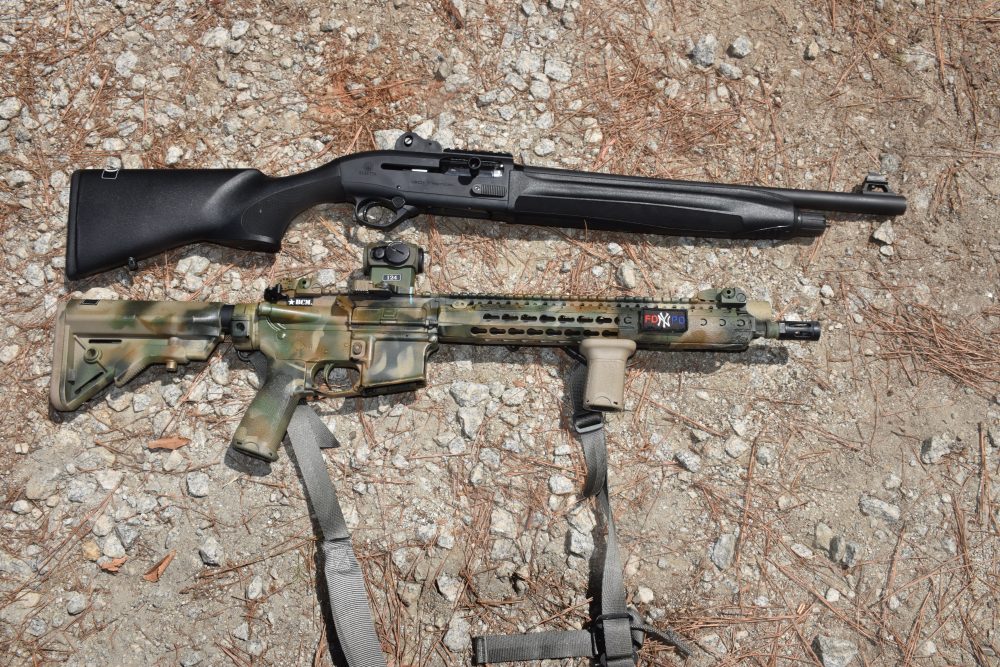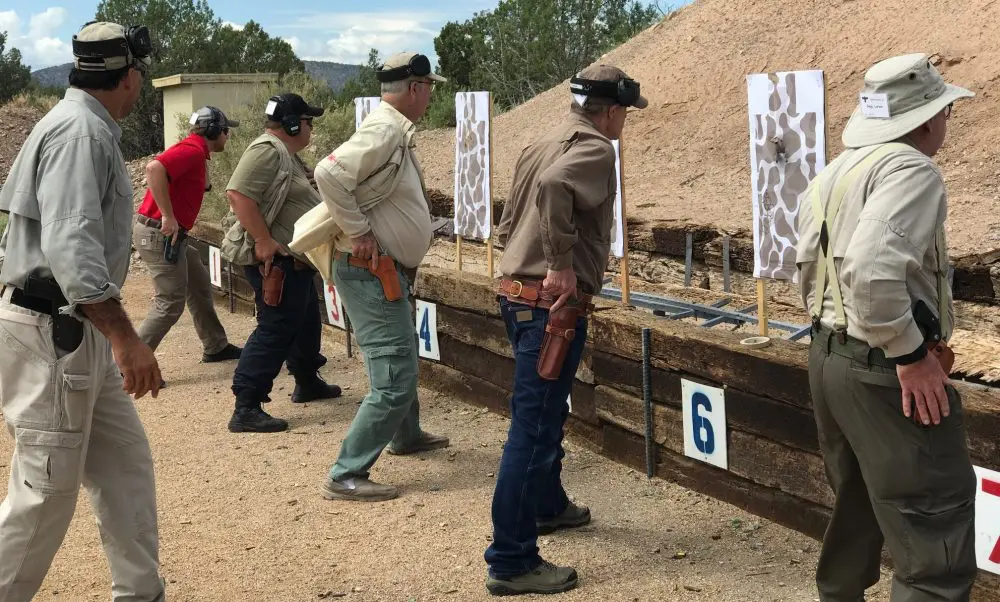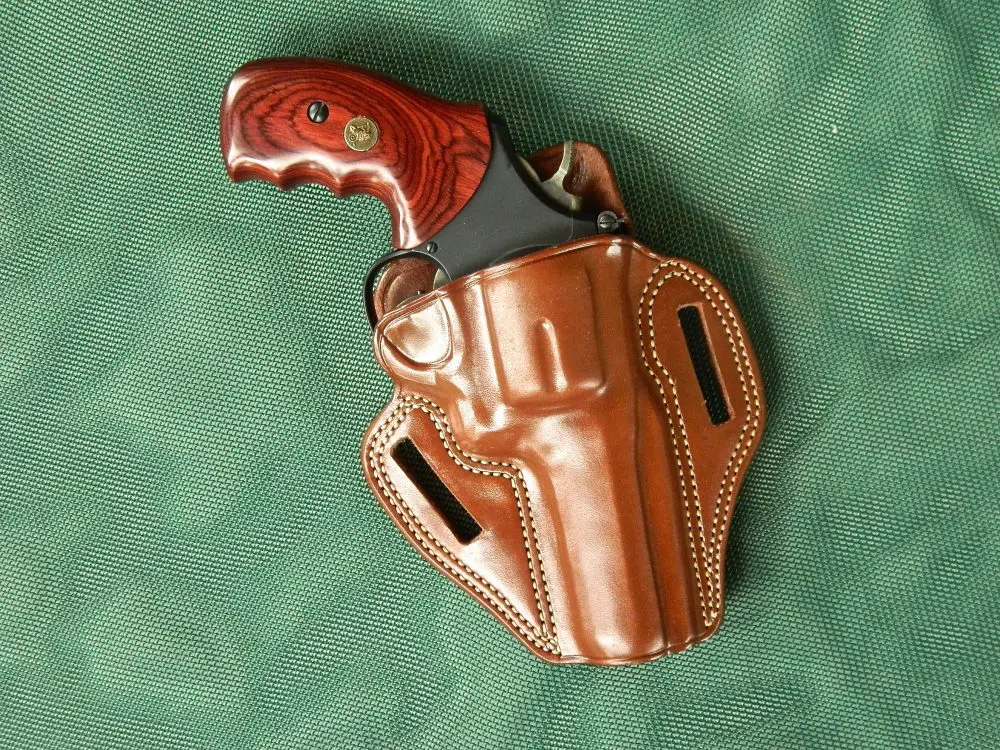Personal defense is not limited to when you are out in public. And since you are in your residence more often than not, some thought has to be given to how you will defend your castle. What works for one may not for another: Consider physical condition, injuries, illness, stature, and familiarity with each weapon type. Additional issues, such as finances, locale, and family, will also factor in.
And as with everything else, your frame of reference will predominate. We want to stay in our comfort zone and will therefore surround ourselves with items with which we are familiar. Unfortunately, many people have limited knowledge of what is available or even useful.
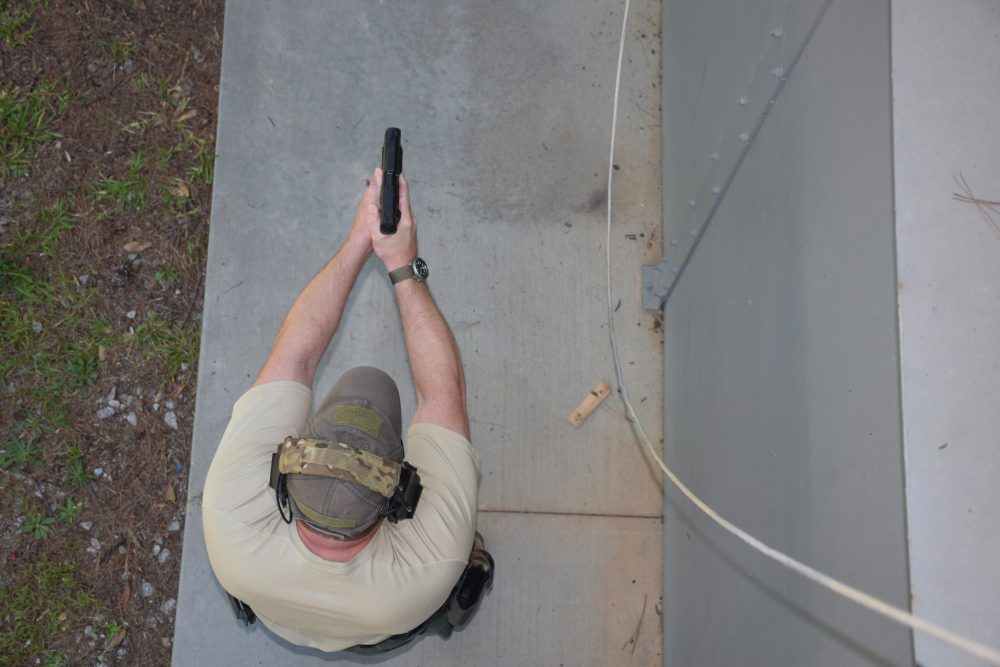
As of late, a number of bloggers and errornet/Facebook aficionados have taken to making declarations as to what firearm is “best” for home defense, which is apparently a very contentious subject. The posts that followed would lead one to suspect that the majority of gun owners are ill informed (at best).
I don’t have all the answers—I’m not even sure I have all the questions—but I do have some opinions on this, as well as experience. Lots of it. When it comes to launching bullets at someone in your residence, there are three common tools: handguns, shotguns and carbines.
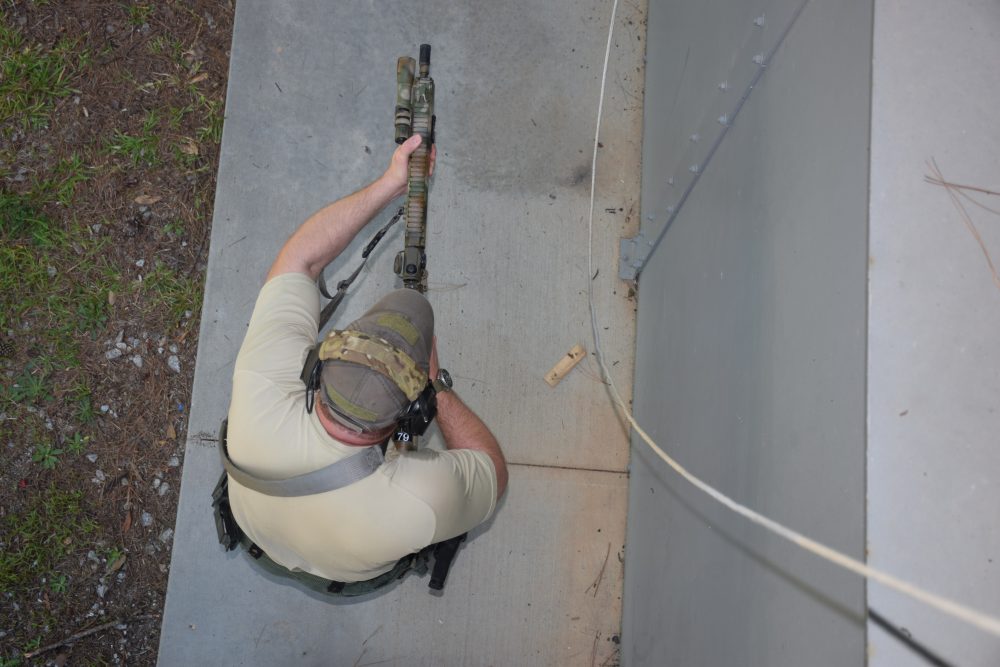
Table of Contents
HANDGUNS
The handgun—either a revolver or semi-auto pistol—is the most common weapon available. The handgun is carried by 99 9/10ths of people because it is convenient and concealable, so it is the go-to weapon for most who use the gun for defensive purposes. They have it, and that may very well be what they use to defend the castle.
Handgun Myths
- Caliber must begin with a “4” to be efficient.
- Any Magnum will do.
- The Judge is the ultimate defensive weapon.
- One shot, one kill!
- You can carry your baby to safety while returning fire one handed.
- Revolvers never “jam.”
Actual Advantages of a Handgun
- It is convenient.
- It may be familiar to you.
- You can shoot it one handed, but degraded is degraded.
- You can carry it in a holster.
- It is easy to store in the house—drawers, shelves, etc.
- Most can readily accept a weapon-mounted light.
Disadvantages of a Handgun
- It is a poor fight stopper, no matter what type or caliber.
- The only person you can reliably kill with a pistol is yourself.
- It is the most difficult of all defensive weapons to shoot.
- The trigger weight is more than the weight of the gun, which makes for difficult trigger control.
- The sight radius is short, so sight alignment is difficult.
- Shooting it one handed greatly degrades efficiency.
- If you need the handgun in the middle of the night, your Underoos will make a very poor holster.
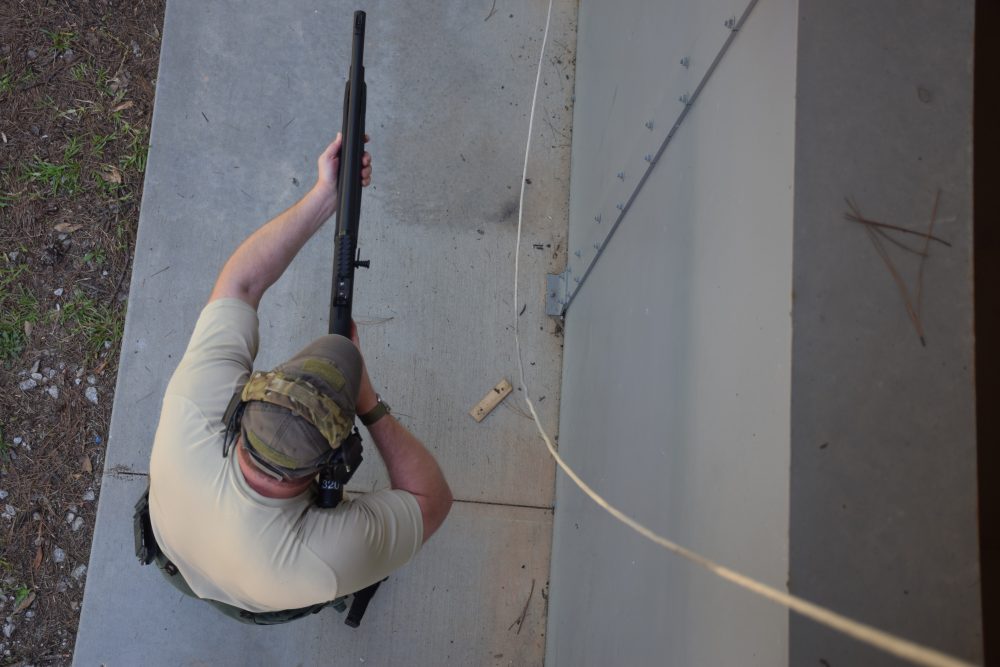
SHOTGUNS
Shotguns are also very common, although most shotguns are used for hunting or slaying clay birds. These are both fun things to do, and good sport. But many types of shotguns may not be viable for defensive use (long barrels, over-and-under barrels, side-by-side barrels, etc).
Shotgun Myths
- Most people actually believe all the hype about this gun.
- Racking the slide will cause perpetrators to soil themselves.
- It merely needs to be pointed and not aimed.
- The spread of the shot at close range—that is, bedroom distances—is measured in feet.
- It can be operated with one hand, so you can save your baby while engaging the threat. And therefore, it does not need a sling.
- Hitting a door with buckshot/birdshot will remove said door.
- It will remove flesh and bone.
- It is actually a death ray, and anyone shot any place with any shotgun will be instantly and permanently taken off the count.
- None of the above is true, nor unique to a shotgun. Unfortunately, mythology rules the roost when it comes to guns or the use thereof.
Actual Advantages of a Shotgun
- It is a very common firearm.
- Used properly, it is efficient.
- Under certain guises, it appears non-threatening.
- It can accept a weapon-mounted light.
Disadvantages of a Shotgun
- It is heavy and long.
- It is longer than a carbine with the same barrel length.
- Contrary to popular belief, it must be properly aimed to hit anything: the spread of the shot pattern is minimal to nonexistent at room distance.
- For some, it has recoil and muzzle blast that may make a user less likely to train with it.
- Slide-action shotguns may be liable to shooter-induced malfunctions.
- Some cannot readily accept a sling.
- It has limited magazine capacity.
- It is slow/difficult to reload.
Beretta 1301 is an exceptionally good choice for those who want a shotgun for home defense. BCM KMR-13 has a 14.5-inch barrel with permanently attached compensator, bringing length to the legal 16-inch minimum.
CARBINES
Carbines have seen an enormous uptick in sales in the last 25 years. This is especially true in those chambered in 5.56x45mm or .223 caliber.
The carbine is an efficient weapon, and for cause.
Advantages of an AR-15 Carbine
- It is ergonomic (even for wrong handers).
- It is extremely reliable.
- It is easy to shoot.
- It is easy to manipulate.
- It readily accepts a weapon-mounted white light.
- Standard magazine capacity is 28 rounds. Better to have and not need than need and not have.
- For those who believe a 14- or 16-inch carbine is too unwieldy indoors, consider that the military and police use them within structures on a regular basis.
- Take your pistol and hold it out in front of you, and note where the muzzle is. Now shoulder your carbine. Note where that muzzle is.
Disadvantages of a Carbine
- It is black, therefore it is evil.
- Its possession may be prohibited in various socialist-controlled areas.

MORE FACTS
Like many other topics in this community, people become close minded about subjects they may not have any experience with. It isn’t worth the noise or time or bandwidth. The first rule of gunfighting is this: Have a gun. After that, be proficient with that gun, no matter what it might be. This may not be easy for some, but we’re talking about your life, the life of your family, and perhaps the life of another.
Seek proper training. Without that, your gun is useless.
The gun has to be readily available. If it is in a locked box, safe or otherwise not immediately accessible, it is useless to you in an emergency.
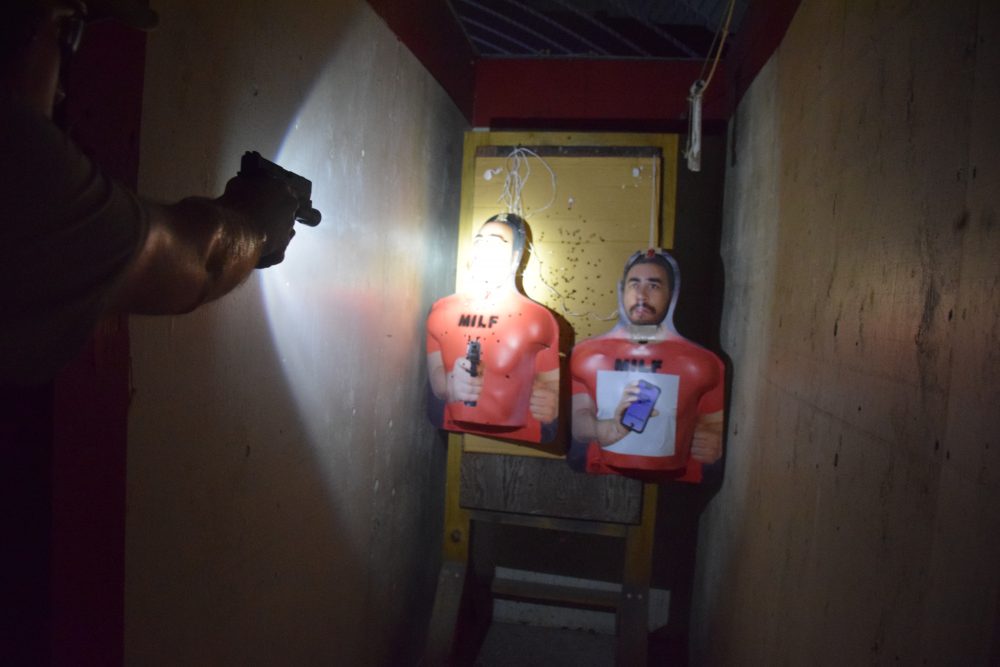
Most people are unprepared for the speed at which violence occurs.
In some locations, laws require that a firearm be locked up. And this is especially important if you have kids in the house. The storage and safeguarding of the firearm are your responsibilities, but so is the protection of your house and family. The most important factor in this equation is not a gun—it is your mindset. You must have the state of mind that will ensure you win the fight.
Some gun owners are not well educated in the whys and wherefores of the gun business, especially as it relates to fighting with—as opposed to just shooting—a gun. And because of this deficiency, they will often listen to someone they believe has some semblance of credibility. But as with most things, it is difficult to separate the wheat from the chaff. I am convinced that this cannot be taught to those who are unaware, but it can be enhanced for those who have the fire within.
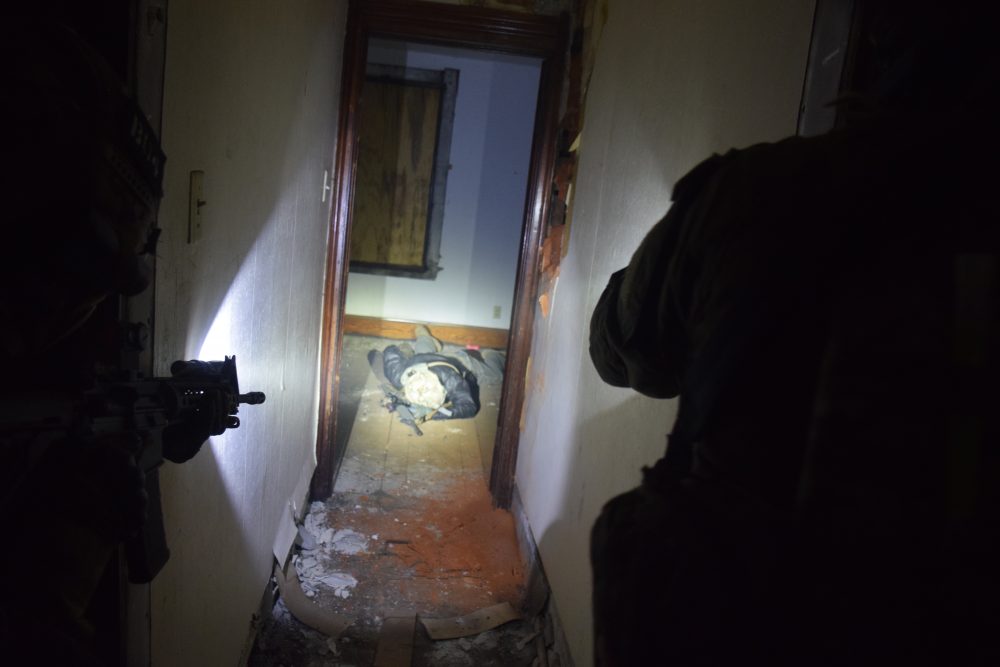
The biggest problem we all face is that sometimes we get so wound up in the pursuit of esoteric minutiae that it becomes a quest for inconsequential increments. And while looking for unicorn sweat at the end of a rainbow, we lose sight of why we were looking in the first place.
Pat Rogers is a retired Chief Warrant Officer of Marines and a retired NYPD Sergeant. Pat is the owner of E.A.G. Inc., which provides services to governmental organizations and private citizens. He can be reached at [email protected].

